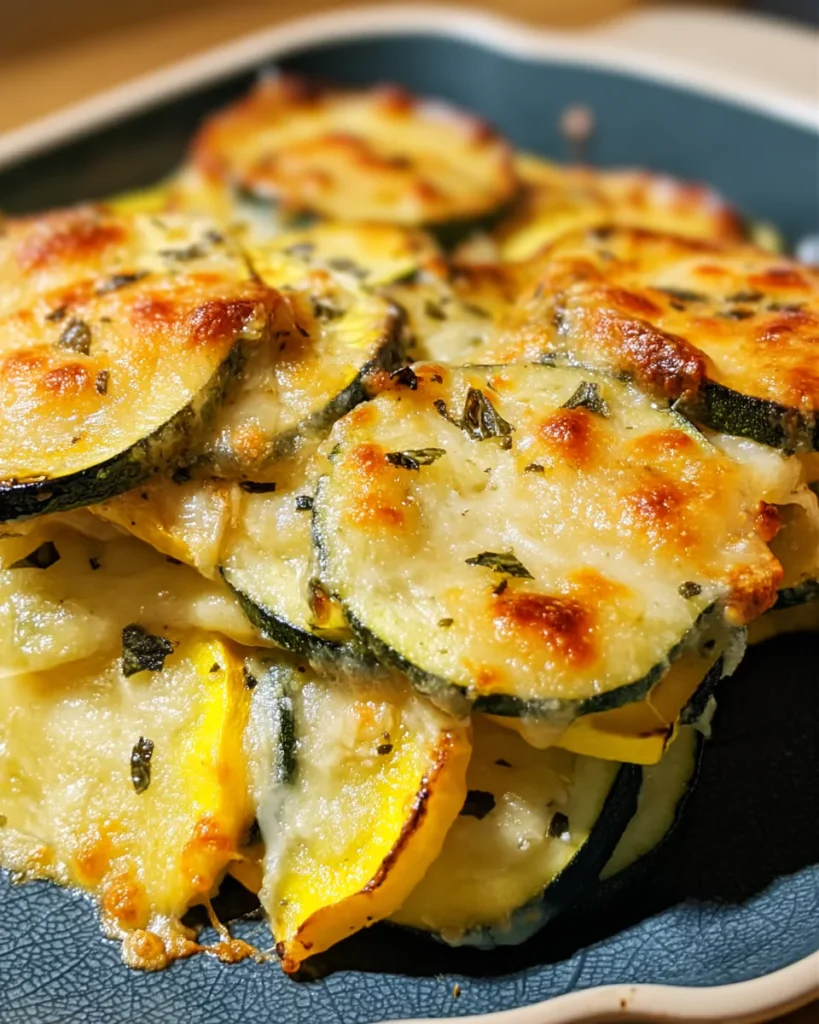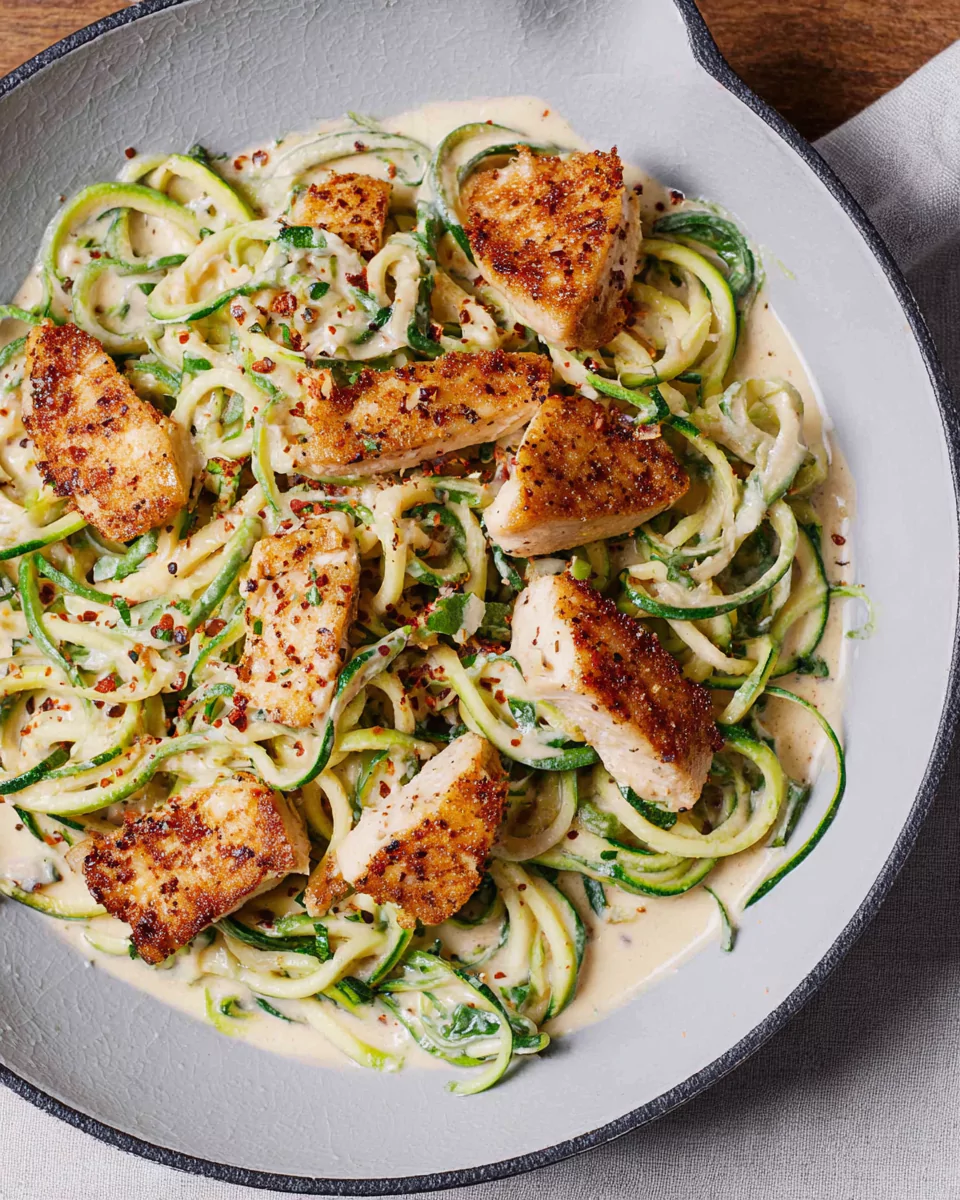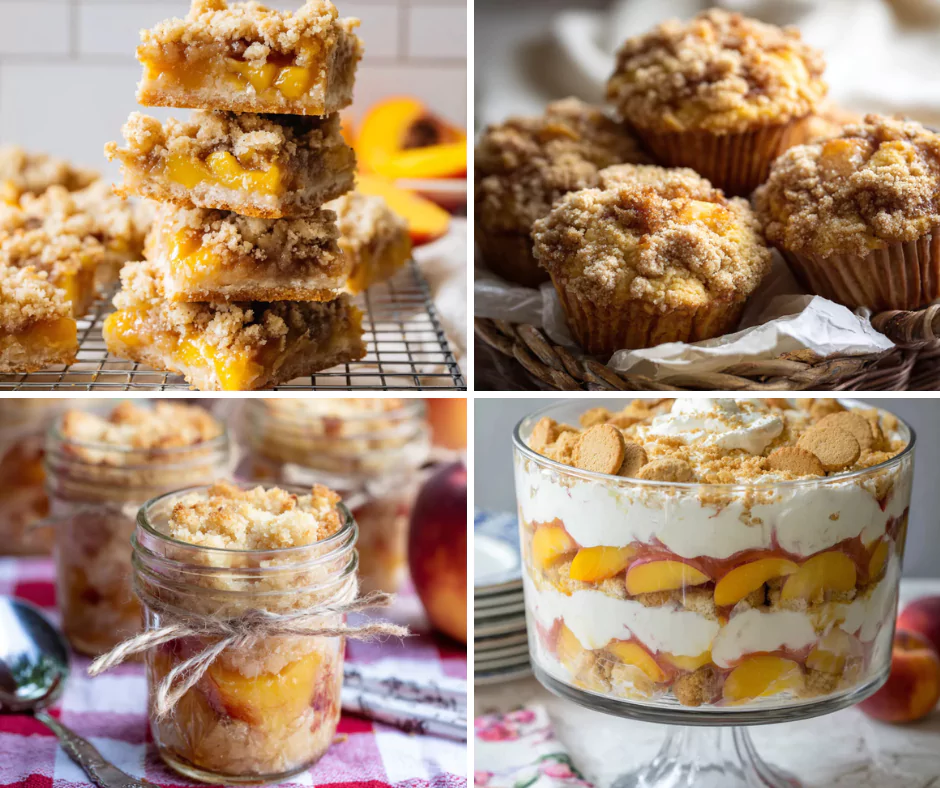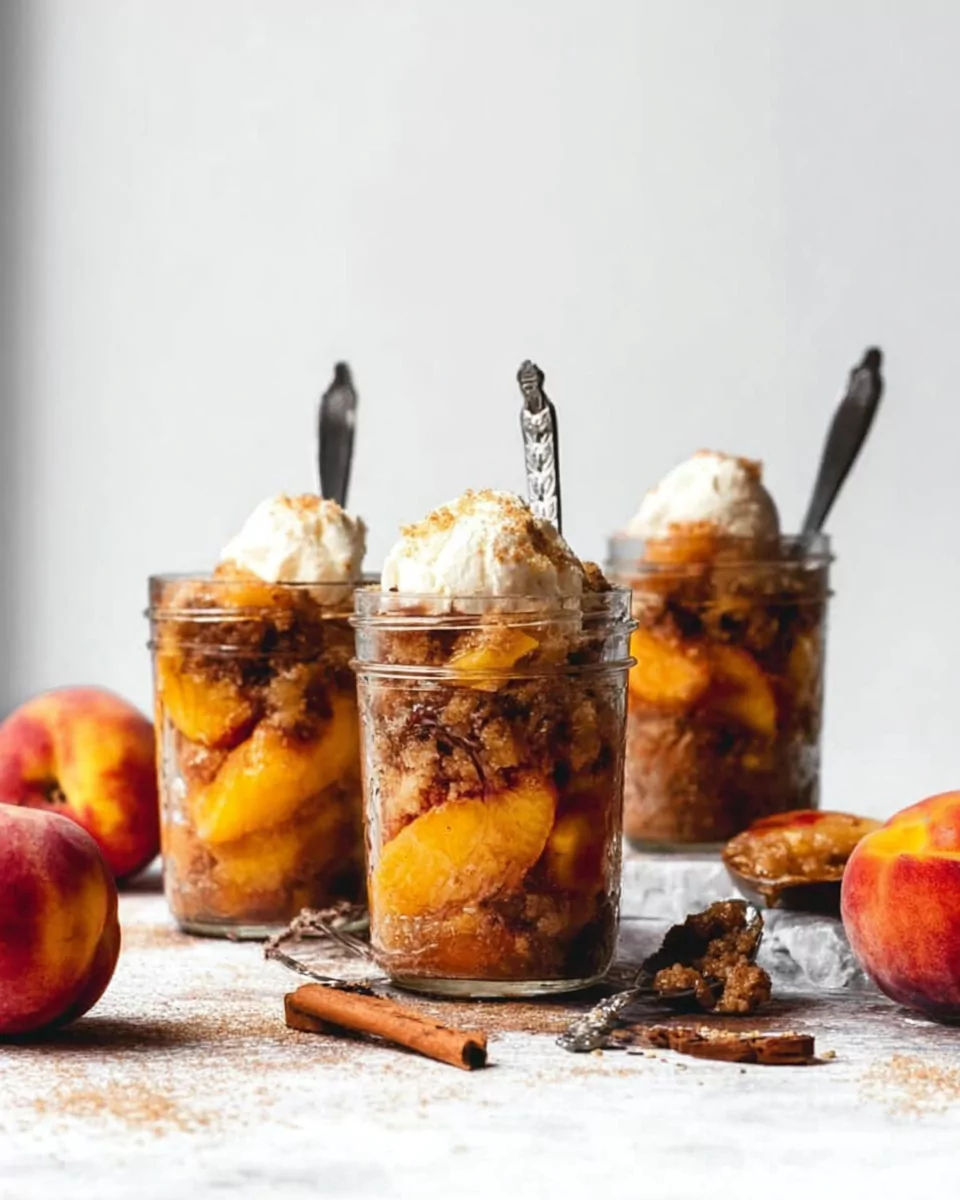Looking for a vibrant, protein-packed dish that feels like summer in a bite? This squash cottage cheese bake is light, fresh, and packed with flavor from lemon, thyme, and tangy feta. It’s an easy bake that’s equally perfect for brunch, lunch, or a casual dinner. But if you’ve ever struggled with a soggy bake, bland texture, or runny middle—this guide fixes all of that. We’ve tested every tip to bring you a firm, sliceable, and deeply satisfying cottage cheese bake. From properly draining to smart blending, let’s get your summer squash bake just right.

Table of Contents
Table of Contents
My Story with Squash Cottage Cheese Bake
Where it All Began: A Summery Solution to Busy Nights
I first made a squash cottage cheese bake during a typical whirlwind summer week—garden overflowing with yellow squash, fridge packed with eggs and leftover feta, and two hungry kids needing dinner fast. I didn’t want anything heavy, but I needed something satisfying and packed with protein.
I remembered a friend once suggested a cottage cheese bake, so I gave it a go. The first time? Honestly, it was a bit of a mess—soft in the center, watery at the bottom, and impossible to slice neatly. But I knew the potential was there. That’s when I started tweaking: draining the cottage cheese longer, salting the squash properly, and blending the base to make it smooth and stable.
Why People Struggle with This Dish (and How to Fix It)
Let’s be real—the number one issue with a squash cottage cheese bake is that watery, unset middle. It’s the kind of thing that turns a beautiful bake into a disappointing spoonful. The reason? Moisture. Both cottage cheese and squash are water-rich, and when you skip the prep, it all releases during baking.
Here’s what fixes it:
- Strain your cottage cheese for at least 20–30 minutes. Even small-curd types release surprising liquid.
- Salt and squeeze your squash—don’t skip this. Let it sit with salt, then wring it out like you mean it.
- Blend your custard base. A smooth mixture creates structure.
- Use feta over goat cheese for firmer texture.
- Add a binder like flour or cornstarch. It absorbs hidden moisture as it bakes.
These simple changes transformed this from an okay idea to a crave-worthy sliceable bake. They’re the same upgrades we’ve brought to recipes like our Pumpkin Cottage Cheese Bake—a firm favorite with cozy autumn flair.
Print
Squash Cottage Cheese Bake with Lemon and Thyme
This summer squash cottage cheese bake is packed with fresh lemon, thyme, and tangy feta—designed to be firm, flavorful, and sliceable every time. It’s a high-protein, low-carb dish perfect for breakfast, brunch, or dinner.
- Total Time: 1 hour 5 minutes
- Yield: 6 servings 1x
Ingredients
2 cups (500 g) small-curd cottage cheese, strained (see note)
3 large eggs
1 1/2 cups (approx. 150 g) shredded yellow summer squash
1/2 teaspoon salt (for drawing out water from squash)
1/2 cup (75 g) crumbled feta cheese
2 tablespoons (15 g) all-purpose flour or cornstarch
1 tablespoon (15 g) fresh thyme leaves (or 1 teaspoon dried)
1 teaspoon (5 g) lemon zest
1 tablespoon (15 ml) olive oil
Salt and freshly ground black pepper to taste (go easy on the salt initially, as the feta is salty)
Instructions
1. Place the cottage cheese in a fine-mesh sieve over a bowl and let it drain for 20–30 minutes in the refrigerator. Press lightly to release extra moisture.
2. Toss the shredded squash with 1/2 teaspoon salt and let sit in a colander for 15–20 minutes. Wrap in a clean towel and squeeze firmly until very dry.
3. Preheat oven to 350°F (175°C). Lightly grease a 9×9 inch baking dish.
4. In a blender or food processor, combine the strained cottage cheese, eggs, and flour/cornstarch. Blend until perfectly smooth. Add lemon zest, thyme, and pepper. Pulse to combine.
5. Pour the blended cheese mixture into a large bowl. Fold in the dry squash and crumbled feta cheese. Stir gently to combine. Taste and adjust salt if needed.
6. Transfer the mixture to the prepared baking dish and spread evenly. Drizzle the top with olive oil.
7. Bake for 35–40 minutes, or until golden brown and set in the center. A knife inserted should come out clean.
8. Let the bake cool in the pan for at least 10–15 minutes before slicing. This allows it to firm up fully.
9. Serve warm, room temperature, or cold. Store leftovers in the fridge up to 3 days or freeze in slices.
Notes
Use small-curd or dry-curd cottage cheese and always strain to prevent sogginess.
Salting and squeezing the squash is essential for removing moisture.
Feta is preferred over goat cheese because it holds its shape and adds structure.
Blend the base for best texture and fold in dry ingredients gently.
- Prep Time: 25 minutes (includes draining/salting time)
- Cook Time: 40 minutes
- Category: Dinner, Brunch, Cottage Cheese Recipes, Summer Bakes
- Method: Baking
- Cuisine: American
Nutrition
- Serving Size: 1 slice (1/6 of recipe)
- Calories: 210
- Sugar: 3g
- Sodium: 430mg
- Fat: 13g
- Saturated Fat: 6g
- Unsaturated Fat: 6g
- Trans Fat: 0g
- Carbohydrates: 7g
- Fiber: 1g
- Protein: 15g
- Cholesterol: 95mg
Building the Perfect Cottage Cheese Bake Base
Why Cottage Cheese Needs Straining
If your squash cottage cheese bake has ever come out wet or fallen apart, your cottage cheese is likely to blame. Even small-curd types that look dry can hold more liquid than expected. That extra moisture has nowhere to go during baking — it seeps out and pools at the bottom, ruining the texture.
That’s why straining cottage cheese is non-negotiable.
My recommendation? Use small-curd or, even better, dry-curd cottage cheese if your store carries it. Dry-curd has less moisture from the start, making it perfect for baking. But regardless of the type, strain it well.
Place the cottage cheese in a fine-mesh sieve or in a colander lined with cheesecloth set over a bowl. Let it rest in the fridge for at least 20 to 30 minutes. Gently press on the curds to push out even more liquid — you’ll be amazed at how much drains out. This one step dramatically reduces sogginess and makes slicing the final bake effortless.
We use this same trick in lighter recipes like our Blueberry and Lemon Zest Cottage Cheese Bites, where texture matters just as much.
The Science Behind a Sliceable Custard
Once your cottage cheese is dry, it’s time to build a custard base that holds its shape.
Rather than stirring by hand, use a blender or food processor. Combine the strained cottage cheese, eggs, lemon zest, salt, pepper, and a binding agent — this ensures everything emulsifies smoothly.
Now here’s where it gets technical in the best way:
- Flour (2 tbsp): A dependable binder that creates a classic structure.
- Cornstarch (2 tbsp): For a silkier, slightly creamier finish.
- Gluten-free? Almond flour or a GF all-purpose blend works well too.
Blend until completely smooth. You’re creating an even base that sets up like a quiche but slices like a savory cake. This is what separates your bake from a sloppy casserole. Once it’s ready, pour into a bowl and fold in your squeezed squash, crumbled feta, and thyme gently. That last step keeps the add-ins evenly distributed without breaking the structure.
Squash and Flavor Pairings That Work
Why Salt + Squeeze is Non-Negotiable
You could follow every other step perfectly, but if you don’t take the moisture out of your squash, your squash cottage cheese bake will still come out soggy. Yellow summer squash (and zucchini, too) is over 90% water, and when it’s baked, that water releases quickly — and it doesn’t reabsorb.
Here’s the most effective technique:
After shredding your squash, toss it with ½ teaspoon of salt in a colander and let it sit for 15–20 minutes. This pulls the water out through osmosis. Once it’s rested, take a clean kitchen towel or cheesecloth, bundle the squash, and squeeze it like crazy. Press hard. Twist. Really work out the water until it feels dry to the touch.
Just squeezing it without salting first isn’t enough — the salt softens the squash and draws the moisture to the surface. This two-step process keeps your bake firm, flavorful, and never mushy.
Want to switch things up? Zucchini works great here too. It has the same texture and moisture content as yellow squash, so just follow the same prep. We use this method often in Zucchini Cottage Cheese Fritters, and the crisp results speak for themselves.
Lemon and Thyme: Add Brightness, Not Sogginess

When it comes to flavor, this dish shines because of the zest of lemon and the delicate herbal warmth of fresh thyme.
Why zest, not juice? Lemon juice adds moisture — something we’re trying to avoid. But zest brings all that citrusy punch without adding any liquid. One teaspoon is just right.
Thyme, meanwhile, gives a savory depth that plays beautifully with the feta and cottage cheese. If you’re using dried thyme, reduce the amount (1 teaspoon dried = 1 tablespoon fresh). And if thyme’s not your favorite, fresh basil or parsley work well too.
And speaking of cheese, feta wins here for structure. While goat cheese is creamy and delicious, it melts into the bake and makes the texture softer. Feta, being saltier and firmer, holds its shape and creates pockets of savory goodness throughout. It’s one of the reasons our Lemon Raspberry Cottage Cheese Bake works so well — balanced flavor with smart ingredient control.
Whether you’re prepping for brunch, lunch, or leftovers, this part of the process ensures each bite tastes bright, balanced, and never watery.
Baking and Serving with Confidence
How to Bake Until Set, Not Just Golden

Once your cottage cheese is strained, your squash is dry, and your custard base is blended, it’s time to bake. Getting a perfect squash cottage cheese bake isn’t just about mixing and pouring—it’s about how you bake and finish it.
Preheat your oven to 350°F (175°C). Grease a 9×9 inch dish lightly. Pour your well-combined mixture into the pan and spread it evenly. Drizzle the top with a bit of olive oil. This helps the top get that golden, lightly crisp finish.
Now here’s the key: bake for 35 to 40 minutes. Start checking around minute 34. The top should be golden brown and puffed slightly. Insert a knife or skewer in the center—if it comes out clean, it’s ready. Don’t rely only on the look of the top; the center must be set too.
But don’t slice it yet. This is where most people go wrong.
Let your squash cottage cheese bake rest in the pan for at least 10–15 minutes. As it cools, the proteins firm up and the custard fully sets. Slice too soon, and all your effort will ooze out onto the plate. This final step ensures perfect, firm slices that hold together beautifully—like what you see in How to Make a Frittata, where resting is just as important as baking.
Best Ways to Serve and Store It
This dish is as versatile as it is flavorful. You can serve your squash cottage cheese bake warm out of the oven, cooled to room temperature, or even chilled the next day. The flavor deepens slightly as it sits, making it ideal for make-ahead meals.
Planning for leftovers? No problem. Store slices in an airtight container in the fridge for up to 3 days. To reheat, just pop a slice in the toaster oven or microwave for 30 seconds to a minute. It’ll taste just as great reheated.
Need to freeze it? Totally doable. Slice the cooled bake, wrap each piece in parchment, then foil, and freeze in a zip-top bag. It reheats well when thawed overnight and warmed in the oven.
For another bake that keeps beautifully and works great for prepping ahead, try our Cottage Cheese Veggie Bake Recipe. It follows many of the same steps but features hearty mixed vegetables.
Whether you’re serving it up at a weekend brunch or prepping weekday lunches, this squash cottage cheese bake delivers fresh flavor, rich texture, and most importantly—zero soggy surprises.
FAQs About Squash Cottage Cheese Bake
Why is my squash cottage cheese bake watery?
The most common reason is excess moisture in either the cottage cheese or the squash. Make sure to use small-curd or dry-curd cottage cheese and strain it for 20–30 minutes in the fridge. For the squash, salt it and let it sit, then squeeze it vigorously in a clean towel. Skipping either step will almost always lead to a soggy result.
Can I use zucchini instead of yellow squash in this recipe?
Yes, zucchini is an excellent substitute in a squash cottage cheese bake. It has a similar texture and moisture level. Just be sure to prep it exactly the same way—salt, rest, and squeeze it dry before folding it into your mixture.
How do I make cottage cheese bake firm enough to slice?
Several small techniques add up to a firm, sliceable bake. First, blend your custard base to get a smooth texture. Use flour or cornstarch to help absorb moisture. And most importantly, let the bake rest for 10–15 minutes after coming out of the oven. This sets the structure fully before slicing.
Is cottage cheese bake healthy for a high-protein diet?
Absolutely. This recipe uses cottage cheese, eggs, and feta—all naturally high in protein. It’s low in refined carbs and full of wholesome ingredients. If you’re eating high-protein, the squash cottage cheese bake is a great addition to your rotation.
Conclusion: One Foolproof Summer Favorite
With the right prep, this squash cottage cheese bake transforms from a risky, watery dish into a firm, flavor-packed favorite. It’s simple enough for a weeknight dinner and pretty enough for a weekend brunch spread. Each slice is full of bright lemon, fresh herbs, creamy cheese, and tender squash—with none of the soggy mess you may have encountered before.
Just remember the golden rules: strain the cottage cheese, salt and squeeze the squash, blend the custard base, and let it rest before serving. These small steps lead to big success.
Want more cheesy, wholesome bake ideas? Check out our Pumpkin Cottage Cheese Bake for a cozy fall twist or Onion and Gruyere Cottage Cheese Bake for a richer, deeper flavor experience.
Now, go preheat that oven and get ready to serve up slices of summer.
For More recipes Follow me on Facebook!




